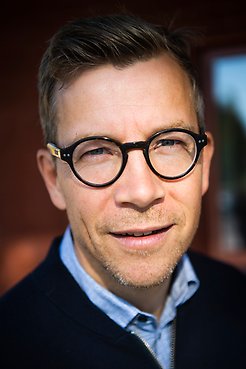
Gustav Jansson
Biträdande professor
Forskningsämne: Byggproduktion och teknik
Avdelning: Industriellt och hållbart byggande
Institutionen för samhällsbyggnad och naturresurser
Biography
My contribution to research society is in focus on methods to support industrialized construction processes where technology, information flow, engineering and management contribute to design stages. In the research about methods and processes for industrialized construction an understanding of predefined structures for products, processes, and technology within platforms for the industry have driven my curiosity for how different industrialized house-building companies organize their work.
Since my dissertation, in 2013, my research has been focusing on breakdown structures for products, processes and locations for the knowledge of how to develop information technology systems to generate the flow of information flow in value chains for construction. Building Information Modelling technology with design automation has been a common theme in research and how development processes, such as design and product development, can be enhanced by means of computer support by automating repetitive tasks or enabling evaluation of manufacturability, costs, and structural integrity. When I started working with the Construction engineering and management group in 2014, my research profile was widened to also include sustainability in the projects: Virtual digital twins (Attract), information flow in value chains (Future Biobased Living), Systematic Requirements, Connected construction site (Smart Built Environment), Scanning, BIM and Generative Design (Timber on Top) and Digital Twins (Data simulation Campus and Cities). Even though these areas can seem unconnected, the common dominator is development of methods or processes based on virtual models with virtual reality and related BIM information to create decision bases for designers or planners in the building process. I use the term Virtual Design since it is about use of digital models, e.g., building information models, simulation models for design work and machine file for production for automated building production, with the aim for a takt based production flow. Efficient and quality secured to do the mistakes in the virtual model instead of at the site or in the factory.
My research is applied meaning that academic methods, e.g., frameworks and processes, are developed in iteration with real case prototype development. This is a basis for understanding the needs of the society and spreading research results. I like research problems that connects technology with societal needs, that there are people with different needs that our methods need to consider creating chances for change and enhancements.
My industry collaborators since being a PhD student have been working with Lindbäcks Bygg and, since I started at the Division for Industrial and Sustainable Construction NCC, Skanska, Tyréns, BoKlok, OBOS, Derome among others. With them, I have worked in several projects within virtual construction for multi-residential building to improve industrialized house-building processes. One part of virtual construction has been about design progresses that govern a number of virtual models. One change in the design progress automatically propagates to the other models and disciplines, which has to be managed for mass customized production. In the Smart Built Environment project Connected work site, we worked with the challenge of modularize the design and production processes with predefinitions in work collaboration procedures to meet and product flexibility and production efficiency for the entire production chain.
In the Timber on Top project we have investigated how to efficiently use methods of scanning and measuring to be able to generate hybrid virtual models for the application of timber structures on top of existing concrete buildings. The use of generative design methods together with geometry collection methods for the design of timber frame module-based buildings was the technology that enabled design variations. This work was managed with clients, consultants, and housebuilders in collaboration with academy to reach new knowledge in efficient design work without limitations of design variety. I think is important to have a chance to find new and innovative ideas but also to develop as a research project leader.
In the Future Biobased living project we developed methods for industrialized house-building companies to breakdown their project unique products with algorithms in BIM environment for the use of automated sequencing and calculated work instructions for prefabricated timber frame modules in factory environment.
Two projects now focus on digital twins in terms of user performance with the combinations of data from BIM and GIS in the transition from city-level down to building and further into components and damages on micro level. This is projects is a project where I supervise Raafat Hussamadin, a PhD student working at LTU.
Education on bachelor and master level
- P0010B – Civil Engineering Design
- W0009B – BIM for Visualization and VR
- W0007B – CAD & VR
- X7005B - Master thesis in Architecture, specialization House building,
- X7006B - Master thesis in Civil Engineering, specialization Construction
